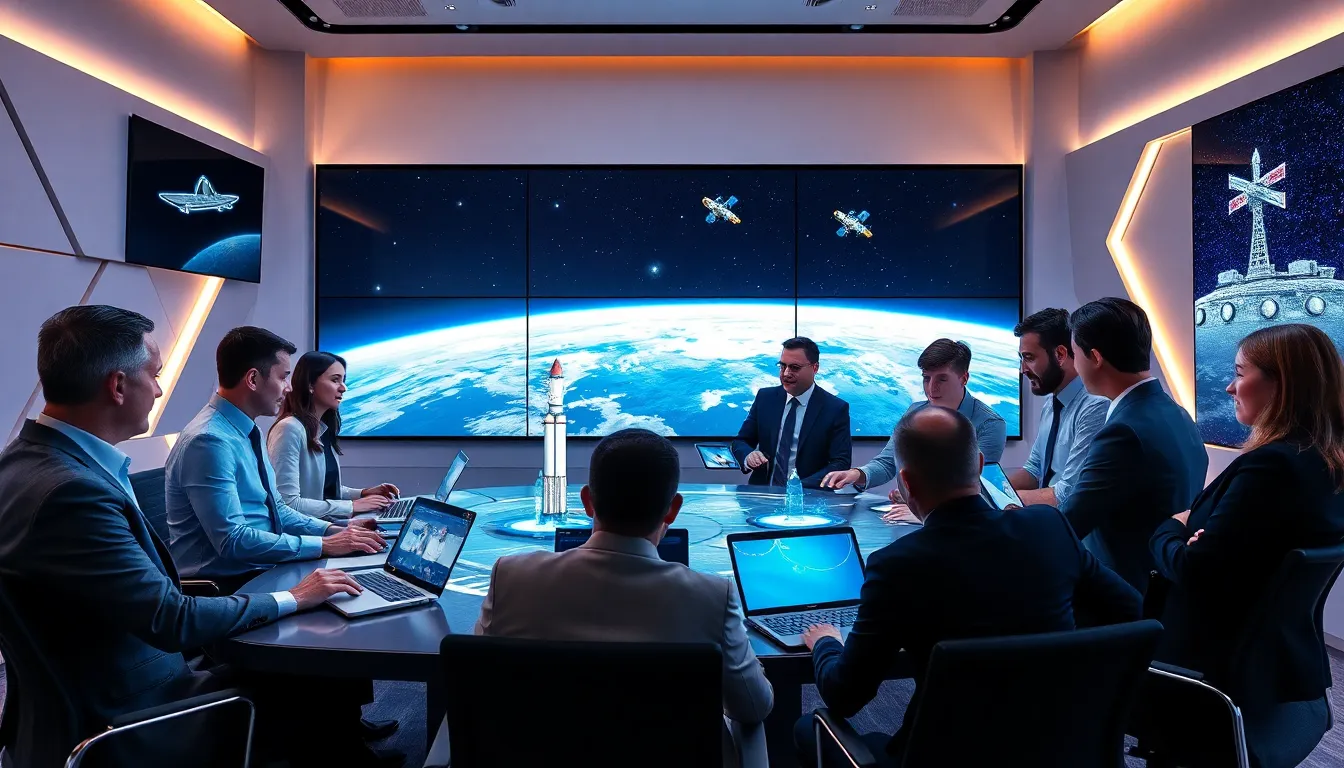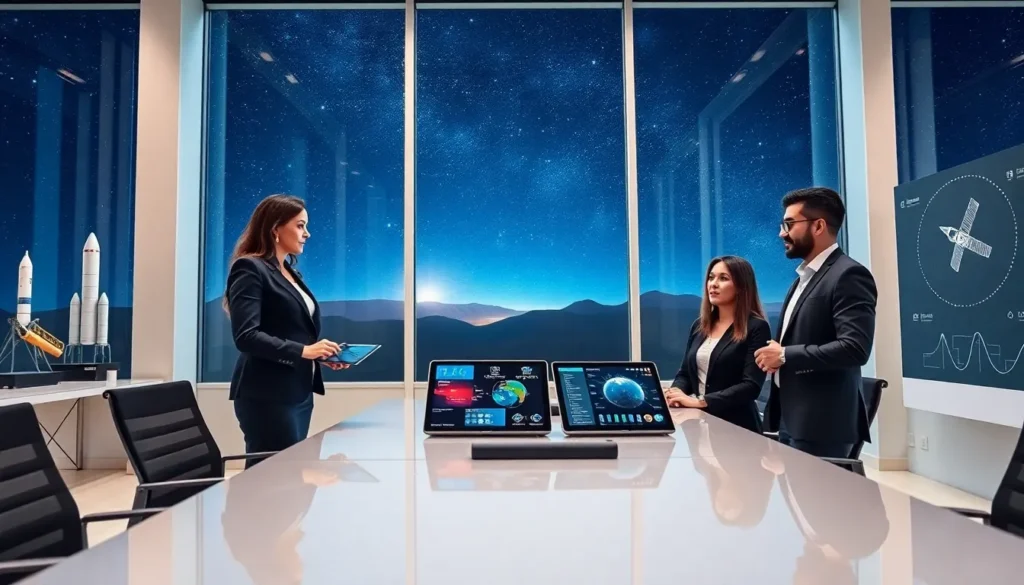Table of Contents
ToggleImagine gazing up at the night sky, where twinkling stars and distant planets invite curiosity and wonder. This realm, often seen as an endless void, is more accessible than ever, thanks to space technology. From launching satellites that bring us GPS to exploring Mars with rovers, space technology is not just a fanciful dream: it’s a field brimming with innovation. So, what is space technology? It’s the art and science of developing tools, vehicles, and systems that allow us to explore, use, and comprehend outer space. Buckle up as we embark on a journey through the cosmos, exploring its evolution, core components, exciting applications, challenges, and the future of this captivating field.
The Evolution of Space Technology

Space technology has come a long way since the dawn of the space age. It all began with the launch of Sputnik 1 by the Soviet Union in 1957, marking humanity’s first step into the cosmos. This initial foray into space was not without its hurdles, but it set the stage for an era filled with groundbreaking achievements.
Fast forward to the 1960s, and America entered the race with NASA’s Apollo program, which eventually led to the historic Moon landing in 1969. This pivotal moment was an exhilarating triumph for humankind, yet it was just a glimpse of what was to come. The advancements would continue ramping up into the 21st century, with missions to Mars and the establishment of the International Space Station (ISS). Today’s technology, from advanced rockets to reusable spacecraft, has transformed how we explore the final frontier.
Also, the evolution of space technology isn’t confined to national agencies. Private companies have emerged as key players in this arena. Companies like SpaceX and Blue Origin are leading the charge with their innovative approaches, often driving down costs and expanding access to space. . So, space technology has transitioned from governmental projects to a vibrant, competitive space industry, showcasing the ingenuity and ambition of people around the globe.
Key Components of Space Technology
Understanding space technology requires a glimpse into its essential components. From satellites to spacecraft, these elements work in unison to bridge Earth and the cosmos.
- Satellites: These orbiting wonders come in various shapes and sizes, serving multiple functions. Communication satellites enable global connectivity, while Earth observation satellites monitor our planet’s health. Don’t forget weather satellites, which play a crucial role in forecasting and disaster prevention.
- Launch Vehicles: These powerful rockets carry payloads into space. With advancements like reusable rockets, companies are lowering costs and increasing efficiency. The Falcon 9, for instance, can land back on Earth after delivering its payload, which is a game-changer for the industry.
- Spacecraft: These vehicles transport humans and instruments beyond our atmosphere. Rovers like Curiosity and Perseverance explore Martian terrain, while crewed spacecraft, such as SpaceX’s Crew Dragon, carry astronauts to the ISS.
- Ground Control Stations: These command centers are vital for communication and monitoring. Through intricate systems, experts track every move of satellites and spacecraft from thousands of miles away.
Each component plays a significant role, perfectly illustrating how collaborative efforts and cutting-edge technology help us reach for the stars.
Applications of Space Technology
The applications of space technology are as diverse as they are impactful, reaching all facets of our daily lives. Here are some of the most notable applications:
- Communication: Thanks to satellites, we can communicate with anyone around the world, whether you’re video chatting with a friend across the globe or tuning in to live news broadcasts.
- Navigation: GPS relies on a network of satellites to help you get from point A to point B with ease. Gone are the days of paper maps.
- Weather Forecasting: Satellites monitor weather patterns, allowing meteorologists to provide accurate forecasts and warnings to keep everyone safe during natural disasters.
- Disaster Management: Remote sensing technology aids experts in assessing damage and coordinating relief efforts after disasters, making rescue operations more efficient.
- Scientific Research: Space technology allows us to gather invaluable data about our universe. Telescopes like Hubble have provided stunning images and insights into distant galaxies, enhancing our understanding of cosmic phenomena.
These applications are not just technological achievements: they are vital contributors to societal progress and resilience, fostering safety, connectivity, and knowledge.
Challenges in Space Technology Development
Even though its impressive achievements, space technology is not without challenges. Developing these sophisticated systems involves significant obstacles:
- High Costs: Launching missions into space can be astronomically expensive. The need for robust funding can stifle innovation, particularly for smaller companies or countries with limited budgets.
- Technical Complexity: Designing and building spacecraft comes with intricate technical hurdles. From ensuring life support systems function flawlessly to managing propulsion systems, engineers face high-stakes challenges.
- Safety Concerns: Safety is paramount. The loss of lives on missions, such as the Space Shuttle Challenger disaster in 1986, serves as a sobering reminder of the risks involved. Ensuring astronaut safety continues to be a top priority.
- Space Debris: As more satellites populate our orbits, space debris poses a growing threat. This junk can collide with operational satellites, leading to potentially disastrous consequences.
- Political and Legal Issues: The exploration and utilization of space give rise to complex legal and political questions. Treaties and regulations around space traffic management or the potential colonization of other planets can create friction among nations.
Navigating these challenges requires collaborative efforts, innovative solutions, and a commitment to pushing the boundaries of what is possible.
The Future of Space Technology
Looking ahead, the future of space technology is boundless and filled with exciting possibilities. Here are a few trends shaping this promising horizon:
- Mars Colonization: Missions to establish a human presence on Mars are already in the planning stages. Companies like SpaceX envision sending crewed missions to the Red Planet in the coming decades, which could forever change human exploration.
- Sustainable Practices: Emphasis on sustainability is rising in the space sector. The development of eco-friendly rockets and efforts to mitigate space debris may become standard practice to protect our orbital environment.
- Commercial Space Travel: With advancements in technology, space tourism could soon be a reality for those with a hefty bank account. Companies are working towards making outer space a playground for the adventurous at heart.
- International Collaboration: As exploration continues to grow, international cooperation may become even more paramount. Joint missions and collaborative research can help pool resources and expertise.
- Next-Generation Satellites: Innovations in satellite technology may lead to enhanced functionality, quicker data relay, and improved capabilities for Earth observation, communication, and navigation.
The future holds tremendous promise, driven by human ingenuity and a thirst for knowledge.




